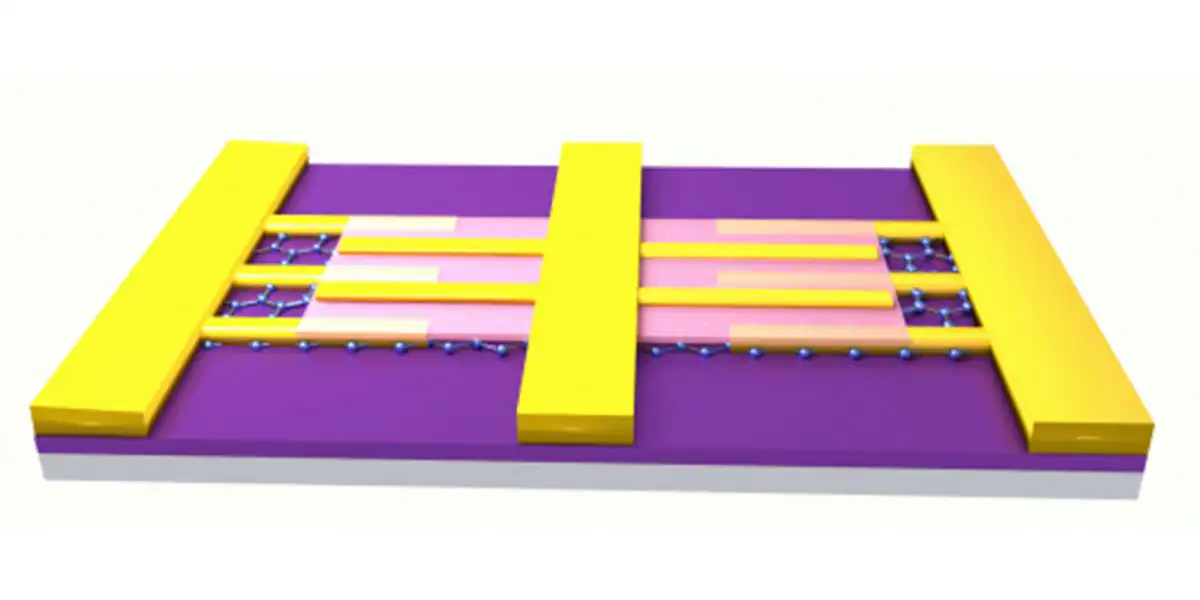Researchers at the Swiss Federal Institute of Technology in Lausanne (EPFL) have developed a tunable, graphene-based device that could significantly boost the speed and efficiency of wireless communication systems. The device, named the Graphene Quantum Capacitor (GQC), could revolutionize how “Internet of Things” (IoT) devices connect and interact in the future.
The GQC is designed to replace tunable capacitors, which can be found in all wireless devices, by tuning the circuits to different frequencies so that they can operate across a wide range of frequency bands. In addition, it meets other needs that neither microelectromechanical systems (MEMS) nor metal–oxide semiconductor (MOS) capacitors can, such as good performance at a high frequency, miniaturization, and the ability to be tuned using low energy.
The sandwich-shaped structure utilizes the fact that a two-dimensional gas of electrons in a quantum well can behave like a quantum capacitance.
"It's by applying voltage that we can 'tune' our capacitors to a given frequency, just like tuning a radio to get different stations," says Clara Moldovan, lead author of the study.
HOW DOES IT WORK?
Wireless communications come in many forms such as mobile phones using 4G or 5G connectivity, GPS devices, and computers connected via Bluetooth to portable sensors, and operate in different frequency bands. To work across multiple platforms, connected objects have to be compatible with a whole range of frequencies without being weighed down by excessive hardware, notes
Laure-Anne Pessina.
Most portable, wireless systems currently come equipped with reconfigurable circuits that can adjust the antenna to transmit and receive data in the various frequency bands. However, MEMS and MOS, and other technologies that use silicon or metal do not work well at high frequencies, where data can travel much faster.
The sandwich-shaped structure takes advantage of the fact that a two-dimensional gas of electrons in a quantum well can behave like a quantum capacitance,
writes Pessina. This is because it follows the Pauli Exclusion Principle, according to which a certain amount of energy is needed to fill a quantum well with electrons. Quantum capacitance can be easily measured in a single-atom layer of graphene, and the key advantage is that it is tunable by varying the charge density in graphene with a very low voltage.
"It's by applying voltage that we can 'tune' our capacitors to a given frequency, just like tuning a radio to get different stations," Moldovan
tells Pessina.
IOT TECHNOLOGIES
The Internet of Things is a concept used to define a network of interconnected things and devices which are embedded with or connected through sensors, software, network connectivity and the necessary electronics that enable them to collect and exchange data over the internet, making them remotely accessible and automated,
according to BCC Research analyst Nandita Bhotika.
“While it is impossible to know exactly how the IoT market will evolve over the next decade, it’s fairly certain that IoT advances will strain existing spectrum allocations as billions of new wireless internet connected devices come online,” she says. “Wireless network coverage and data speeds are evolving and mobile network operators around the world are continuing to invest in network upgrades to support LTE technologies that enable mobile broadband connectivity of up to 400 megabits per second (Mbps). Operators also continue to expand and improve network coverage to make global cellular wireless access ubiquitous.”
THE QUANTUM CAPACITOR OFFERS MANY ADVANTAGES
The GQC is only several hundred micrometers (around 0.05 cm) long and wide, can be stiff or flexible, is easily miniaturized, and uses very little energy. Potential applications are numerous. In addition to improving the flow of data between connected devices, it could extend battery life and lead to ever more compact devices. In its flexible state, it could be easily used in sensors placed in clothes or directly on the human body,
according to Pessina.
The end technology will be a hybrid in which graphene will be paired with advanced silicon technologies.
"Some have claimed that graphene will one day replace silicon technology,"
observes Adrian Ionescu, who heads the EPFL’s Nanolab, where the device was created. "But in reality, graphene is most effective in the realm of electronics when it is combined with functional silicon blocks.”
"Our results confirm that graphene could truly revolutionize the future of
wireless communications," Moldovan says.



